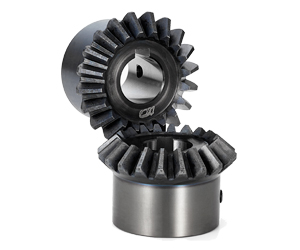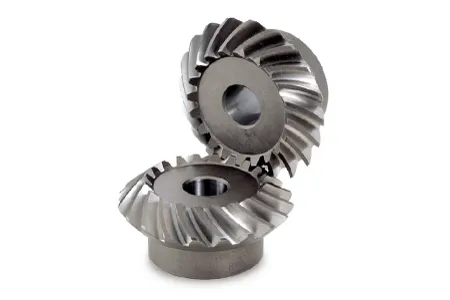Product Description
High Precision Customized Spiral Angular straight differential Bevel Gear miter gear brass plastic wheels helical pinion gears
| Process | CNC machining,CNC milling, cnc lathe machining |
| Available Material | 1.Stainless Steel: SS201, SS303, SS304, SS316, SS416, SS420,etc. |
| 2.Steel: C45, 40Cr, 42CrMo, 20CrNiMo, 20CrMnTi, etc. (AISI 1045, 5140, 4140/4142, 8620 etc.) | |
| 3. Brass:C36000 ( C26800), C37700 ( HPb59), C38500( HPb58), C27200CuZn37), C28000(CuZn40),etc. | |
| 4.Bronze: C51000, C52100, C54400, etc. | |
| 5. Iron: 1213, 12L14,1215,etc. | |
| 6. Aluminum: Al6061, Al6063,Al2571,Al7075 etc | |
| 7. Carbon steel:AISI1006,AISI1571,AISI1571,etc. | |
| 8.Nylon PA66,MC901,POM plastic ects | |
| Hardness | HRC50~55 |
| Quality Control | ISO9001 and ISO14001 |
| Dimension bore tolerances | -/+0.01mm |
| Quality standard | AGMA, JIS, DIN |
| Size/Color | Gears and parts dimensions are according to drawings from customer, and colors are customized |
| Surface treatment | black oxide,Zn-plated,ni-plated,tin-plated,chrome plated,passivated,sandblast and anodize,chromate,polish,electro painting,black anodize,plain,H.D.G,etc. |
| Dimensions Tolerance | ±0.01mm or more precise |
| Samples confirmation and approval | samples shipped for confirmation and shipping cost paid by customers |
| Package | Inner clear plastic bag/outside carton/wooden pallets/ or any other special package as per customer’s requirements. |
Manufacturing processes
Click here for more details!
Customization process
Support Customized Gears from Customers’ drawings and samples and Various non-standard customization
1.Products Discussions
Customers send drawings oramples, and quote according to customers’ requirements.
2.Molds designing
Designing 3D drawings and optimizing the products.
3.Drawing confirmation
Sending the mold drawing tothe customers , and the customers CHINAMFG for confirmation.
4.Molds Construction
Manufacture molds accurately and accurately according to the drawings.
5.Moulds Inspection and Moulds Test
Detect various indicators of molds and optimization of inner cavities.
6.Sample Aprroval from Customer
Customers approve the samples and confirm them for bulk production.
7.Mass Production
Bulk production according to customers’s PO
8.PO Finished
Shipping to the customer andthe customers receive the gears.
If you need other customized requirements, please click here to contact us!
Related products
Why Choose Us
We enthusiastically provide sincere and prompt service to our customers and establish sustainable business relationship with them.
100% Factory inspection, we are responsible for any problems subjected to malfunction in warranty period.
We Can Provide You:
- On-time Delivery with More Choice
- Product Solutions and Service
- Long Quality Guarantee
- Local Technical Support
- Fast Response to Customers’ Feedbacks in 24 hours
Also I would like to take this opportunity to give a brief introduction of our CHINAMFG company:
Our company is a famous manufacturer of agriculture gearbox,worm reduce gearbox, PTO shafts, Sprockets ,rollar chains, bevel gear, pulleys and racks in china.
We have exported many products to our customers all over the world, we have long-time experience and strong technology support.
You also can check our website to know for more details, if you need our products catalogue, please contact with us.
Company information
| Application: | Motor, Electric Cars, Motorcycle, Machinery, Marine, Toy, Agricultural Machinery, Car |
|---|---|
| Hardness: | Hardened Tooth Surface |
| Gear Position: | External Gear |
| Manufacturing Method: | Cast Gear |
| Toothed Portion Shape: | Bevel Wheel |
| Material: | Cast Iron |
| Samples: |
US$ 999/Piece
1 Piece(Min.Order) | |
|---|

What are the factors to consider when selecting miter gears for an application?
When selecting miter gears for an application, several factors need to be taken into consideration to ensure optimal performance and compatibility. Here are some key factors to consider:
1. Load Requirements:
Determine the magnitude and type of load that the miter gears will be subjected to. Consider factors such as torque, speed, and direction of rotation. This information helps in selecting miter gears with the appropriate load capacity and tooth strength to handle the application’s requirements.
2. Gear Ratio:
Identify the desired gear ratio, which is the ratio of the number of teeth between the input and output gears. The gear ratio determines the speed and torque relationship between the gears. Select miter gears with a gear ratio that meets the specific speed and torque requirements of the application.
3. Accuracy and Precision:
Determine the required level of accuracy and precision for the application. Certain applications, such as precision instruments or robotics, may require miter gears with high precision and low backlash to ensure accurate motion transmission.
4. Space Constraints:
Evaluate the available space for the miter gears within the system. Consider the gear dimensions, shaft orientations, and clearance requirements. Choose miter gears that can fit within the available space while still allowing for proper meshing and alignment.
5. Noise and Vibration:
Consider the acceptable levels of noise and vibration for the application. Spiral bevel gears, for example, are known to reduce noise and vibration compared to straight bevel gears. Select miter gears with suitable tooth profiles and designs to minimize noise and vibration if required.
6. Lubrication and Maintenance:
Assess the lubrication and maintenance requirements of the miter gears. Some miter gears may require specific lubrication methods or periodic maintenance. Consider the ease of access for lubrication and maintenance tasks when selecting miter gears.
7. Environmental Factors:
Take into account the environmental conditions in which the miter gears will operate. Factors such as temperature extremes, moisture, dust, chemicals, or exposure to corrosive substances can impact gear performance. Choose miter gears that are suitable for the specific environmental conditions of the application.
8. Cost and Availability:
Consider the cost and availability of the miter gears. Evaluate the overall value proposition, including the initial cost, long-term maintenance costs, and the availability of spare parts. Balance the cost factor with the desired performance and reliability.
By considering these factors, engineers and designers can select miter gears that are well-suited for the application’s requirements, ensuring efficient and reliable operation.
“`
How do miter gears contribute to transmitting power at different angles?
Miter gears play a crucial role in transmitting power at different angles due to their unique design and meshing characteristics. Here’s a detailed explanation:
1. Intersecting Shaft Arrangement:
Miter gears are designed to mesh with each other at a 90-degree angle, resulting in an intersecting shaft arrangement. This arrangement allows the input and output shafts to be oriented perpendicularly, enabling power transmission at different angles. By changing the orientation and position of the miter gears, power can be redirected or transmitted along different axes.
2. Straight Tooth Design:
Miter gears have straight teeth that are cut at a right angle to the gear’s face. This tooth design facilitates proper meshing and engagement between the gears when they are at a 90-degree angle. The straight tooth design ensures efficient power transmission and minimizes energy losses during the transfer of rotational motion.
3. Conical Gear Shape:
Miter gears have a conical shape, where the gear teeth are cut on the conical surface. This conical shape allows for the correct alignment and engagement of the teeth when the gears mesh at a 90-degree angle. The conical gears ensure that the teeth maintain proper contact and transmit power smoothly, even when power is transmitted at different angles.
4. Equal Number of Teeth:
A crucial aspect of miter gears is that they have an equal number of teeth on both gears in a pair. This balanced tooth configuration ensures proper meshing and a constant speed ratio between the gears. The equal number of teeth is essential for transmitting power accurately and maintaining the desired rotational relationship between the input and output shafts.
5. Tooth Contact and Load Distribution:
When miter gears mesh, the contact between the teeth occurs along a single line, known as the line of contact. This concentrated contact area facilitates effective load distribution and ensures that the gear teeth bear the transmitted torque evenly. Proper tooth contact is vital for efficient power transmission and preventing premature wear or damage to the gears.
6. Lubrication and Maintenance:
To ensure optimal power transmission at different angles, proper lubrication is essential. Lubricants help reduce friction and wear between the gear teeth, ensuring smooth operation and extending the lifespan of the gears. Regular maintenance, including lubrication and inspection, helps maintain the performance and reliability of the miter gears over time.
In summary, miter gears contribute to transmitting power at different angles through their intersecting shaft arrangement, straight tooth design, conical gear shape, equal number of teeth, and consideration for tooth contact and load distribution. By utilizing these design features and ensuring appropriate lubrication and maintenance, miter gears enable efficient power transmission at various angles, making them valuable components in machinery and mechanical systems.

What is the purpose of using miter gears in mechanical systems?
Miter gears serve several purposes and offer distinct advantages when used in mechanical systems. Here’s a detailed explanation:
1. Change of Shaft Direction:
One of the primary purposes of using miter gears is to facilitate a change in the direction of shaft rotation. When two miter gears with intersecting shafts are meshed together, they allow the transmission of rotational motion at a 90-degree angle. This enables the redirection of power and torque to a different axis, which can be crucial for the functioning of various mechanical systems.
2. Power Transmission:
Miter gears are designed to efficiently transmit power between intersecting shafts. The meshing of the gear teeth ensures a smooth transfer of rotational energy, enabling the transmission of torque and rotational motion from one shaft to another. This makes miter gears suitable for applications where power needs to be transmitted between perpendicular axes.
3. Speed Reduction or Increase:
By using miter gears with different numbers of teeth or by combining them with other gears, speed reduction or speed increase can be achieved. The gear ratio between the miter gears determines the change in rotational speed. This allows for the adjustment of output speed to match the requirements of the mechanical system, ensuring optimal performance.
4. Compact Design:
Miter gears are known for their compact design, making them valuable in applications where space is limited. The intersecting shafts and the conical shape of the gears allow for efficient power transmission while occupying a small footprint. This compactness is particularly beneficial in devices and systems where size and weight constraints are critical factors.
5. Alignment and Torque Distribution:
Miter gears help maintain proper alignment and torque distribution between intersecting shafts. The gear teeth engagement ensures accurate alignment, which is essential for smooth and efficient operation. Additionally, the equal distribution of torque among the teeth of miter gears helps prevent excessive stress on individual gear teeth, promoting longevity and reliability.
6. Applications:
Miter gears find applications in a wide range of mechanical systems, including:
- Power transmission systems
- Automotive differentials
- Mechanical clocks
- Robotics
- Printing machinery
- Woodworking tools
- Camera lenses
In summary, the purpose of using miter gears in mechanical systems is to facilitate a change in shaft direction, transmit power efficiently, achieve speed reduction or increase, maintain a compact design, and ensure proper alignment and torque distribution. These characteristics make miter gears suitable for various applications, contributing to the functionality and performance of mechanical systems.


editor by CX 2023-12-06
